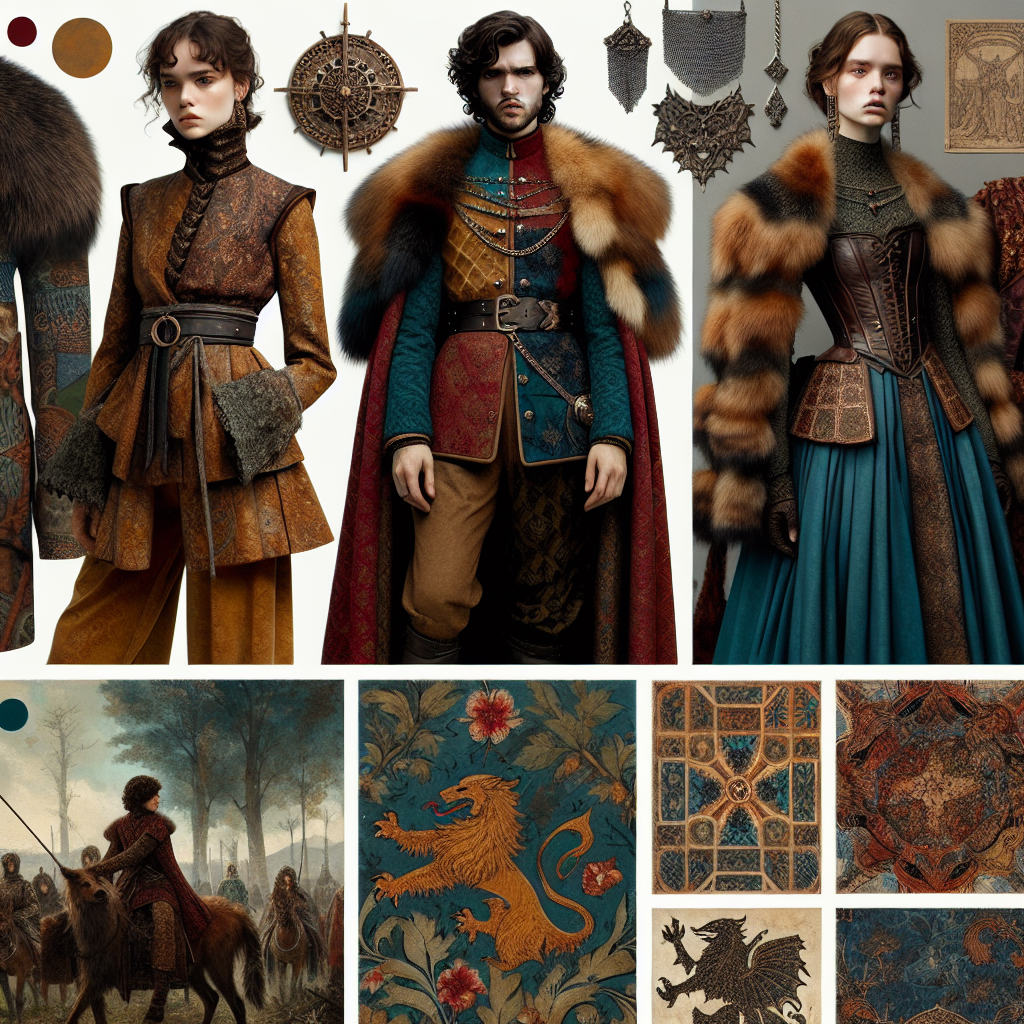Title: Game of Thrones (2011) Fashion: Unveiling the Iconic Styles That Defined Westeros
Introduction:
The HBO series "Game of Thrones" (2011-2019) did more than captivate audiences with its intricate storytelling and complex characters—it presented a distinct sartorial visual language that left an indelible mark on fashion history. Costume designer Michele Clapton meticulously crafted wardrobes that not only defined characters but also conveyed the intricate socio-political fabrics of the fictional realm of Westeros. Beyond setting the tone for the series, the costumes became influential in both high fashion and popular culture, introducing a unique blend of medieval aesthetics and intricate detailing.
Significance in Fashion History:
"Game of Thrones" holds a significant place in fashion history due to its innovative blend of traditional and fantastical elements. Clapton’s designs transcended standard costume design; they evolved into cultural artifacts that influenced contemporary fashion. This marriage of narrative and costume design showcased the power of clothing in storytelling and how fashion reflects and shapes societal identities.
Main Themes and Styles:
The fashion of Westeros is rooted in a rich tapestry of themes, each intricately linked to cultural and character-driven influences:
-
Medieval and Renaissance Influences:
Clapton drew heavily on medieval and Renaissance eras while adding a fantastical twist. The intricate embroideries, rich fabrics, and elaborate headpieces evoked a sense of history while fitting seamlessly into the series’ mythical setting. -
Power and Status:
Costumes acted as visual indicators of power and status. The Lannisters, for instance, were often adorned in opulent red and gold, symbolizing their wealth and dominance. In contrast, the Stark family’s wardrobes were simpler and more utilitarian, reflecting their stoic and resilient nature. - Symbolism and Character Evolution:
Fashion also served as a medium to signify character development. Daenerys Targaryen’s transformation from an exiled princess to the formidable Dragon Queen was mirrored in her evolving wardrobe, shifting from simple garments to elaborate outfits adorned with dragon motifs.
Detailed Examples of Iconic Designs:
-
Daenerys Targaryen’s Dragon Scale Dress:
One of the most iconic pieces is Daenerys’ dragon scale dress, a symbolism-rich design that highlights her connection to her dragons and her claim to the Iron Throne. The scalelike embroidery and structured silhouette evoked strength and resilience. -
Cersei Lannister’s Coronation Gown:
Cersei’s black coronation gown, adorned with metalwork and featuring a high collar, projected power and intimidation. The gown’s dark hue and severe design mirrored her ascension to the throne and solidified her ruthless ambition. - Jon Snow’s Night’s Watch Cloak:
Jon Snow’s fur-lined cloak signified his acceptance into the Night’s Watch and his role as a protector of the realm. The garment’s functionality and ruggedness also encapsulated the harsh realities of life beyond the Wall.
Cultural and Historical Contexts:
The fashion of "Game of Thrones" is deeply intertwined with the socio-political and cultural fabric of its world:
-
Cultural Authenticity and Fantasy:
Clapton employed a balance of cultural authenticity and fantasy. While drawing from real-world historical attire, she infused elements that gave the costumes an otherworldly quality, resonating with audiences’ sense of nostalgia and wonder. - Social Hierarchies and Identity:
Fashion in the series offered insights into the social hierarchies and identities of its characters. Wealth and status were conveyed through luxurious fabrics and intricate designs, while simplicity and practicality underscored humility and resilience.
Multiple Perspectives and Analysis:
-
Academic Perspective:
Scholars might argue that the costumes are a visual language that provides a deeper understanding of the narrative’s social and political dynamics. They may analyze how the precision in costume design adds layers to the storytelling, drawing parallels between the show’s attire and historical garment traditions. -
Fashion Industry Perspective:
From a commercial viewpoint, "Game of Thrones" influenced contemporary fashion by inspiring collections that echoed its aesthetic. High fashion designers and brands, from Alexander McQueen to Valentino, have incorporated medieval and fantastical elements reminiscent of the series into their collections. - Popular Culture Perspective:
Within popular culture, the show’s fashion prompted a revival of medieval and fantasy-inspired fashion trends, seen in cosplay, themed events, and even mainstream retail. The show’s influence extended to bridal fashion, with designers incorporating metallic accents and regal silhouettes akin to those worn by characters like Sansa Stark and Margaery Tyrell.
Legacy and Lasting Influence:
The legacy of "Game of Thrones" fashion is manifold. It revolutionized the role of costume design in television, setting a new standard for depth and authenticity. The impact permeated various facets of fashion, from high-end designers to fast fashion retailers, who drew inspiration from the distinct styles depicted on the show.
Conclusion and Reflective Takeaways:
The fashion of "Game of Thrones" invites us to reflect on the role of clothing in storytelling and identity formation. How does fashion convey power and transformation in our own world? What can we learn from the meticulous craftsmanship and cultural blends that defined Westeros’ attire? As fashion continues to evolve, what elements from this iconic series might we see reimagined in the future?
The enduring appeal of "Game of Thrones" fashion underscores the timeless nature of well-crafted design and its ability to transcend the screen, influencing cultural and sartorial landscapes. The show’s legacy invites us to consider the broader implications of costume as a narrative device and as a reflection of historical and cultural identities.
In contemplating these aspects, we are reminded of the powerful intersection between fashion, culture, and storytelling. How might these perspectives shape the fashion narratives of tomorrow?
Got more questions? Our personalized Fashion Explorer AI assistant is here to help. Click here to start a conversation!
[Advertisement]
Wondering how fashion reflects deeper values? Discover how ANY trend or style relates to positive biblical principles with Fashion and Scripture GPT from BGodInspired.com. Click here to see fashion in a new light!
[Advertisement]

